September 23, 2020. ARRI introduces four Signature Zoom lenses:
- 16-32 mm T2.8
- 24-75 mm T2.8
- 45-135 mm T2.8
- 65-300 mm T2.8
(110.5-510 mm T4.95 with dedicated 1.7x extender)
They cover Large Format / Full Frame and have LPL mounts (44 mm flange focal depth, 62 mm inside diameter.)
So, now there is an ARRI Signature lens system consisting of four Signature Zooms and sixteen Signature Primes. The roadmap was more like a speedway. Signature Primes were unveiled concurrently with ALEXA LF at BSC Expo in February 2018. First customer deliveries began in May 2018 with the 35, 47, 75 and 125 mm primes. Then, during every following month in 2018, at least one or two additional focal lengths shipped. By the end of 2018, I think delivered sets already consisted of thirteen lenses. Three more Signature Primes arrived in 2019; they were unique: 12, 15, and 280 mm. I cannot recall an introduction of so many cine lenses in such a short time.
Pre-production 45-135 and 65-300 Signature Zooms have landed. Logan Schneider and Jimmy Matlosz recently wrapped demo shorts. Logan commented, “Signature Zooms felt like looking through a window. If things look good in front of the lens, they will look good. They see everything and they are also really nice with skin tones. The resolution gives you all the detail and the smooth skin tones. Inherently it’s a mellow image, with a mixture of nice contrast, rich blacks and highlights, so you can use the full tonal range.”
Deliveries of the two longer Signature Zooms are expected in Q2 of 2021, and the others by Q4 of 2021.
ARRI Signature Zooms
ARRI Signature System: Primes & Zooms
Interview with Thorsten Meywald on Signature Zooms

Thorsten Meywald, ARRI Product Manager Optical Systems, taken in February 2018 with an ARRI Signature Prime 47mm at T1.8. By Jon Fauer.
JON FAUER: Please tell us about the new ARRI lenses. What are they called? What focal lengths and details?
THORSTEN MEYWALD: Our new Signature Zoom lenses may not be a big surprise. When we introduced the Signature Primes in 2018 our customers asked, “Are there going to be zooms?” We said, “Yes, they are on the roadmap and planned.” We have been working on zooms for the past two years. Both the primes and the zooms are part of a system.
I think the expectation was that we would create one zoom lens, and that’s it. This, however, would not meet our goals. First, as an alternative to primes, a cinematographer should be able to shoot an entire feature, commercial, or TV show with these zoom lenses without any compromise in quality. Second, these zooms must match the look of our Signature Primes in order for our lens system to truly succeed.
Do the Signature Zooms have the same signature logo as the primes?
The Signature Zooms have the same handwritten logo as the Signature Primes. They are a family of lenses that look similar on the outside as well as on the inside. The mechanical housings are all magnesium.
Tell us about the details and focal lengths.
There are four zoom lenses and also an extender. All of them cover Large Format.
The Signature Zoom system starts with a very wide 16-32mm. The mid-range zoom is a 24-75mm. Next, there’s a longer 45-135mm zoom. Finally, there’s an extremely long 65-300mm zoom. They have a consistent maximum aperture of T2.8 with no exposure ramping. The T-stop remains the same from 16 mm to 300 mm.
The illumination circle diagonal exceeds 46 mm and covers ALEXA LF and Mini LF sensors, as well as cameras from RED, Canon, Panavision and Sony.
What about the image circle?
Image circle and illumination circle are often used interchangeably, which gets confusing. Within the image circle you have well defined performance data for MTF, color aberrations, distortion, breathing, etc. The illumination circle defines the level of illumination at the corner of the image, while at the same time allowing for relaxation of the optical performance. The image circle of the Signature Zooms covers ARRI Alexa LF and Mini LF sensors. The illumination circle amply covers RED MONSTRO 8K VV sensors.
And the Extender?
To complement the 65-300 mm zoom, we have created a 1.7x extender. It ships with the zoom as a matched set at no extra charge. Many photographic extenders are “universal” in that they can be used with many different lenses. However, that can result in optical compromises. To retain the highest optical performance, we designed this extender specifically for use with this lens. It transforms the 65-300 mm T2.8 zoom into a 110-510 mm T4.9 zoom.
This 1.7x extender works with one additional lens: our 280 mm T2.8 Signature Prime, which is the longest focal length in our prime lens set. It turns that prime into a 476 mm T4.9.
Another reason for designing a dedicated extender is that we saw no reason to extend a lens to a focal length that we already offer. An extender should enhance a product line, not duplicate it.
For example, you wouldn’t use the extender with the 75mm T1.8 Signature Prime because we offer a 125 mm T1.8. Nor would you use the extender with the 45-135 mm T2.8 zoom because we offer a 65-300 mm T2.8. This philosophy enabled us to focus on making the best extender possible for a single purpose, rather than a lower quality extender for many purposes.
Hypothetically, would it work on the other zooms and primes?
Mechanically it won’t work because there will be a collision between the rear element of the base lens and the front element of the extender. That’s the reason we engrave a warning on the extender that you should only use it on the 65-300 mm Signature Zoom and on the 280 mm Signature Prime.
Many extenders in the industry have four or six elements inside. Our extender has 10 elements, which is necessary to maintain our high optical standards.
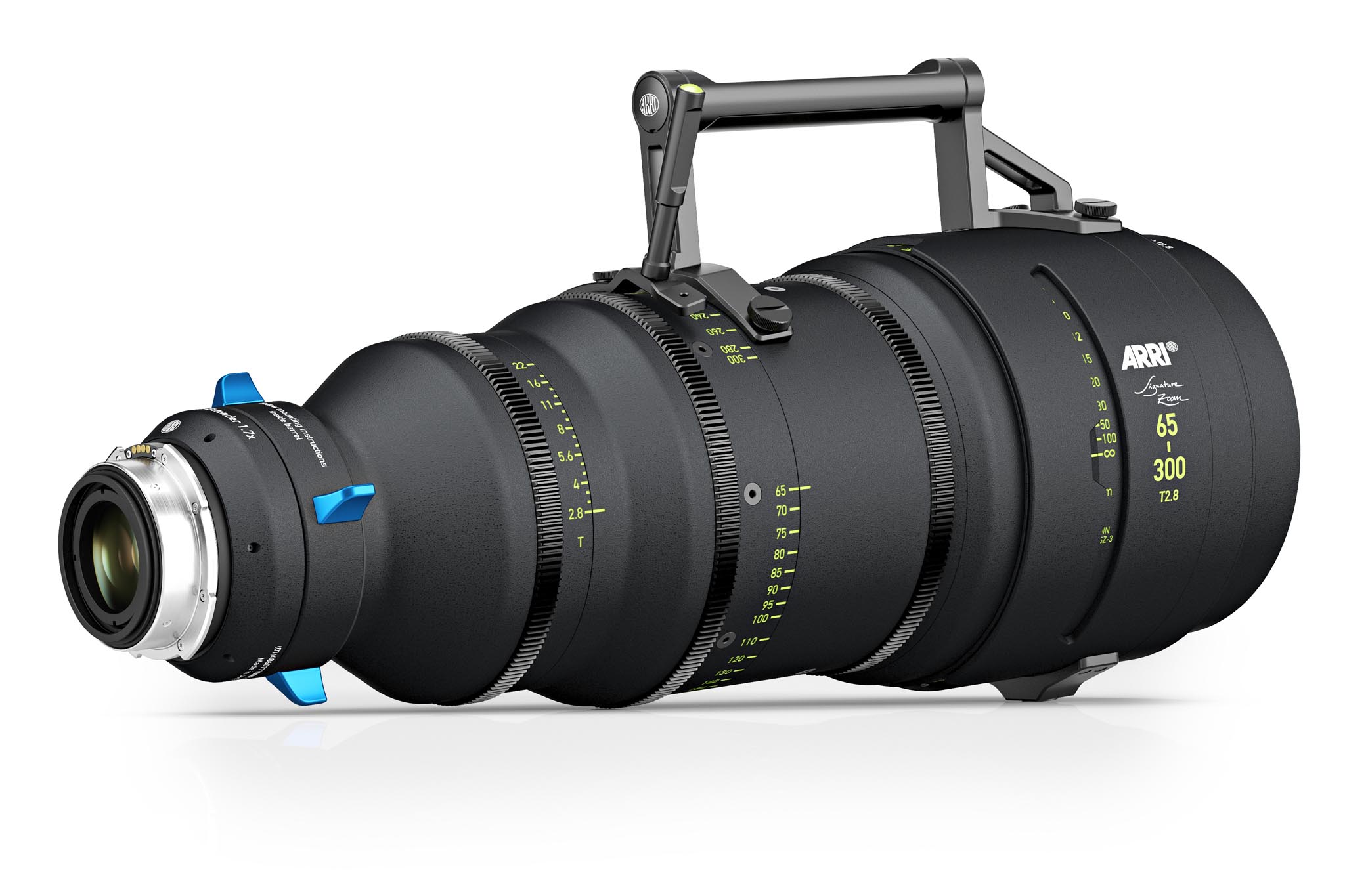
65-300 T2.8 with 1.7x Extender makes it a 110.5-510 mm T4.95. Shown with detachable carrying handle and zoom stick.
Does the extender change the Minimum Marked Object Distance (M.M.O.D.)?
The close focus of the 65-300 zoom, from the sensor to the object, is 1.8 meters. With the extender, your Minimum Object Distance is increased 4 cm, so your 510 mm focal length will have a minimum close-up distance of 1.84 meters.
Are these zooms handholdable?
The first three zooms can be used handheld. The 45-135 mm weighs about 3.7 kg. It’s short and has a front diameter of 114 mm, which is the same as our Signature Primes. Close focus is one meter.
The 65-300 mm will likely not be used for handheld work, although if you try, you will find it is relatively easy to use. It weighs about 8.1 kg, which is still very lightweight for such a range and maximum aperture. It’s about 420 mm long from the flange to front. It has a 156 mm front diameter.
By comparison, the Signature Prime 280 mm weighs 4.5 kg, with a 134 mm front diameter. Minimum Marked Object Distance is 2.5 meters from the sensor.
The 16-32 mm T2.8 wide zoom is extremely short. It is just 211 mm from the front to the flange. Close focus is 450 mm from the sensor, or 195 mm from the front of the lens. If you’re shooting wide-angle with an ALEXA Mini LF in a very small room, or you’re sitting in a car with limited space, you can move around easily with this very short zoom. The weight is expected to be 3.8 kg. This lens is excellent on a drone as the balance is very good. The lens and the Mini LF are approximately the same length.
When you first set out on this project, how did you decide on the focal lengths?
It began with the concept of having a system of zooms that could work on their own for almost every situation. It you wanted to shoot a show only with zooms, we could provide a range of focal lengths from 16 to 300 mm, or up to 510 mm with the extender. The other idea was to have a range of focal lengths appropriate not only for large format but also for Super35. As a wide-angle lens 16mm is very popular in S35, and in large format, it’s ultra- wide.
How did you decide on the focal length range and overlaps for each zoom? That must have been difficult.
It was very difficult. As you can imagine, there were a lot of discussions. It was a balance of requests from the market and what was practical. We went through several different iterations before we came up with these focal lengths.
The design philosophy followed what we have done with Signature Primes. The 12, 15 and 18mm Signature Primes have incredibly high resolution. Why? Because you often shoot wide scenic vistas and landscapes with lenses in that range and want to see many small details. The resolution of the 16-32 mm Signature Zoom is also incredible. The 45-135 mm Signature Zoom will probably be used more for portraits, and therefore this lens is slightly smoother, gentler and softer because you’re shooting faces with it. The balance of the Signature Zooms follows the balance of the Signature Primes.
Interesting. I was not aware of this balance. Is the 75 mm Signature Prime slightly softer than, for example, the 18 mm?
Yes. Keep in mind that we are talking about very high levels of resolution, and curiously this results in an image that feels extremely natural. There are subtle and intentional aesthetic differences between the wide and long lenses.
Most likely, we will see 8K or higher as a future standard. That is when you’ll see a dramatic difference in images captured right now with Signature Zooms and Primes. Moving images will only become more immersive as display resolution and dynamic range increase. The Signature Look captures high resolution images that are natural, flattering, and timeless. These lenses are designed to be an excellent long-term investment, both technically and aesthetically.
Typically I have avoided describing lenses as being 2K, 4K, or 8K lenses. What’s your opinion on that?
I don’t like to follow the “K race”. On the camera side, we now see 12K. Most likely, sensor development will never end. But when you tell an optical designer you want to have an 8K lens, what does that really mean?
You discuss the resolution of a sensor in “K.” But, you’ll describe a lens in line-pairs per millimeter as you see it on a lens test projector, or you will quantify a lens in MTF which is resolution and contrast. When we talk about high-resolution lenses, we look for high-resolution and contrast in not only the low frequencies but also the higher frequencies as well.
The lower frequencies provide the overall contrast of the image. Older or vintage lenses very often have higher contrast in the lower frequencies, but not in the higher frequencies. This was not required in the past because film has been very forgiving. In the film days, making a lens with a resolution of 80, 100 or more line pairs was nice, but the film process (camera original, gate steadiness and release printing) often reduced resolution significantly. Now, with digital sensors, and especially with HDR, we can record very high resolution and we can show it. And high resolution lenses produce very natural images when matched with a high resolution HDR display.
What is the resolution in line pairs per millimeter of the Signature Zooms?
We have tested the prototypes on projectors in manufacturing and together with customers. We have seen 200 line-pairs in the center at wide-open aperture, T2.8. Stopped down to T5.6, we have also seen 200 line-pairs in the corners. And when we say 200 line-pairs, this was the limit of our test chart. This follows common wisdom about fall off: when you stop down, your field gets flatter, and you get better resolution in the corners.
So, in terms of image quality, the Signature Zooms are as good as primes?
I am asked this question very often. I have heard some other companies say that their zooms are as good as primes. That’s a difficult statement—because how are you comparing? If you compare the Signature Zooms with the Signature Primes, you’ll see a subtle difference. At a technical level, the prime will still be better.
This is physics. Can you make a zoom that has exactly the same performance as a prime? Theoretically you can, but then you end up with a massive lens that no one can afford. We think that the quality of Signature Zooms will stand out by comparison to other zooms and primes.
Most importantly, their look matches our own primes. I know of no other primes and zooms that match so closely in digital. Film smoothed over many differences, but digital is not as forgiving.
Can you say that the Signature Zooms match Signature Primes?
Yes. The matching is about the look, the bokeh, the very smooth and subtle separation of the main subject from the background. The bokeh is not distracting. When I refer to bokeh, I’m speaking not only about the out of focus highlights but the entire out-of-focus image. This quality is consistent across all Signature primes and zooms.
Please tell us about skin tones.
The skin tones also match. They are very natural and slightly warm. Skin texture is natural without feeling harsh. We capture fine detail without unnatural harshness.
As with Signature Primes, the Signature Zooms have very little distortion. Breathing is minimal. Chromatic aberration is very well corrected, both laterally and longitudinally. This was standard homework we had to do.
What is the style, the quality, the look, in less technical, but maybe more painterly, artistic or culinary terms?
You and I have discussed Signature Primes in oenological terms and I find this quite appropriate. Imagine we are tasting a wine from Tuscany. They make very good wine there. Some are quite expensive, for example the Super Tuscans like Tignanello or Sassicaia. They have a distinct complexity. When you lean back, close your eyes and taste such a wine, you will experience something different each time.
Other growths from Tuscany may be less complex and less expensive. The basics are similar: it can be the same soil, the same grapes, the same sun and maybe even the same winery. They are the second and third growths. They are less complex. When you taste one of these more affordable wines, they can be almost as good, but somehow the experience is the same every time you try them.
The look of the Signature lenses is consistent but, at the same time, very complex. This look is predictable in quality, yet it produces images of unexpected complexity and sophistication.
If you are in a restaurant — I look forward to that when this crisis ends —and the food is not so good, sometimes you’re influenced by that and say, “This wine is not as good as what I remember from last time.” Reluctantly returning from wine-tasting to look, I assume the Signature Zooms have the same micro contrast finesse for skin tones and details that you have in the Primes.
Yes, they have the same kind of smoothness that you know from the Signature Primes, which is not a lack of resolution. The resolution is still very high. This is why skin tones look so smooth: the transitions across fine details are rendered in a higher number of tonal steps, for greater complexity.
Do the Zooms have a magnetic rear filter holder?
They do. It’s the same interface, so you can use the same rear filters on both the Signature Primes and Signature Zooms. You can even use the rear filter with the extender.
And LDS-2 metadata?
The zooms and extender are LDS-2 capable. When you use the extender, the camera will automatically record metadata that references precise changes in your focal length, T-stop and also minimum marked object distance as the lens itself becomes a couple of centimeters longer due to the length of the extender.
LDS-2 is exceptionally helpful for VFX as it dynamically records the entrance pupil position, which somewhat simplifies tracking and compositing.
And LDS-2 will be also expanded in the near future to capture distortion and chromatic aberration correction information. We design our lenses to eliminate the need for this kind of information under normal circumstances, but for critical use we plan to provide it.
Would you like to tell us about manufacturing?
Signature Zooms are made in the same facility as Signature Primes and designed by the same optical and mechanical designers. Zoom lenses are much more complicated than prime lenses. When I describe the Signature Look I often say it is a balanced approach to harmonizing aberrations and resolution. We took the same approach in manufacturing in that we harmonized mechanical stability and optical performance.
We take customer service very seriously. The lenses can be serviced at our ARRI service stations in Munich, Beijing, Hong Kong, and Burbank. These facilities have dedicated MTF measurement devices, clean rooms and tools to service both our prime and zoom lenses. The first customer shipments will begin in the second quarter of 2021, with all the zooms available by early fourth quarter of 2021, and by then our service stations will be ready for them.
What were some of the specific challenges in making zooms?
One of the challenges is the thermal stability of the zoom, which is even harder to fulfill than a prime. You can imagine having the same optical performance with a prime at minus 20 degrees and plus 50 degrees. The bearings still must rotate and not get too stiff or too loose. This is much more critical in zoom lenses because you have many more moving groups. We have spent quite some effort to thermally stabilize these zoom lenses and we believe they are on the same level as the primes.
Do you have the approximate prices of these lenses?
Here are the European prices. I don’t have the exact American prices yet. For the 65-300mm including the extender, the list price is 59,900 Euros. For the 24-75mm and 45-135mm, each is 39,900 Euros. And the wide-angle lens, the 16-32mm, which I sometimes call an optical beast, is 55,900 Euros.
Why do you call it a beast?
It’s because of the optical quality. The resolution is higher than the other lenses, which is very difficult to do in a wide angle zoom lens. This is done on purpose to capture fine detail in wide shots and vistas. The breathing of this lens, even at 16 mm where it really counts, is zero-point-something percent. It’s almost zero. Our goal with Signature lenses is that they should only enhance images. They should never distract.
It’s not an upside-down image, is it?
No, it’s not upside down. It’s not the unique design we used for our 12 mm Signature Prime or the 9.5-18 mm Ultra Wide Zoom and 19-36 mm Anamorphic Ultra Wide Zoom made for Super35 format.
When did you finalize the optical design and start building the prototypes?
We already have working prototypes for the two longest zooms that have now been field-tested on several productions. We are beginning serial production. The prototypes for the two wider zooms are coming by end of this year.
When was this project green lit? When did you say, “Okay, let’s go and build them?”
It was at the end of 2018.
Do you see trends in different areas of the world preferring different focal lengths of zooms or primes?
Currently the Asian market in particular has been asking for extremely wide-angle lenses, which surprises me. There’s a large demand for the 12, and 15, and 18 mm — and especially for the 12 mm which is comparable in angle of view to an 8 mm in Super35 format. France, Spain and India have been open to more extreme focal lengths as well. The US—especially Hollywood— and the UK are staying with more familiar focal lengths.
When we brought out the 200 mm and 280 mm Signature Primes, some customers initially thought they were rehoused DSLR lenses. Perhaps they came to this idea because many very long lenses in our market are in fact rehoused Nikon, Canon or other brands of camera lenses that are rehoused and equipped with a PL mount. The Signature 200 mm and 280 mm Primes are completely original designs made specifically for use in motion pictures.
This year we have seen more demand for very long lenses. I think this is a result of social distancing. Maybe 20 years from now, we can say, “That’s the 2020 style with lots of depth compression.”
That reminds me of the original Angenieux 25-250 arriving on the scene and on locations in 1962. It helped spark the Nouvelle Vague, the New Wave. It was used on Claude Lelouch’s “A Man and a Woman,” and “Easy Rider,” on most of Rossellini’s films in the 1960s, Haskell Wexler’s “Medium Cool” and many commercials from that era. So how would you summarize what you’re doing with these lenses?
What we are doing with the Signature Zooms is similar to what we have done with the Signature Primes. For us, it’s a new chapter in lens design. These lenses are not an updated version of previous lens design or philosophy, which would have been much easier. We said, “Let’s do something completely new.” This was important because, in the past, most of our lenses were designed for film. Digital possesses a new kind of beauty, and we felt that required a new optical approach. Our roots are in film, so we worked to find a way to retain that aesthetic in a new medium. We’ve done that in our cameras, and we’ve tried to bring that richness and complexity (the Super Tuscan style!) to our lenses.
It was a risk, but cinematographers really like the Signature lenses. That has been borne out by the fact that our lens business has remained stable despite the crisis. That surprised me. I wasn’t expecting that. This is not an easy time in our industry and yet people are buying expensive lenses. As you know, Signatures are not cheap. They are made to last.
Are these customers mostly rental houses or individuals?
Both. They are rental houses and individuals. I have the feeling that in a crisis, when you make an investment, you need to make sure that your investment is safe. Also, you want to be certain that if you have a problem with the product, you will still be able to have it serviced in five, ten or twenty years from now. It becomes a matter of trust in the brand. I think it’s the same behavior that we all resort to as individuals in a crisis. We gravitate toward safe havens. I believe that Signature Zooms and Signature Primes provide this kind of reassurance.
More information:
ARRI Signature Zooms online info.
Signature Zoom Manufacturing Photos
photos and renders courtesy of ARRI

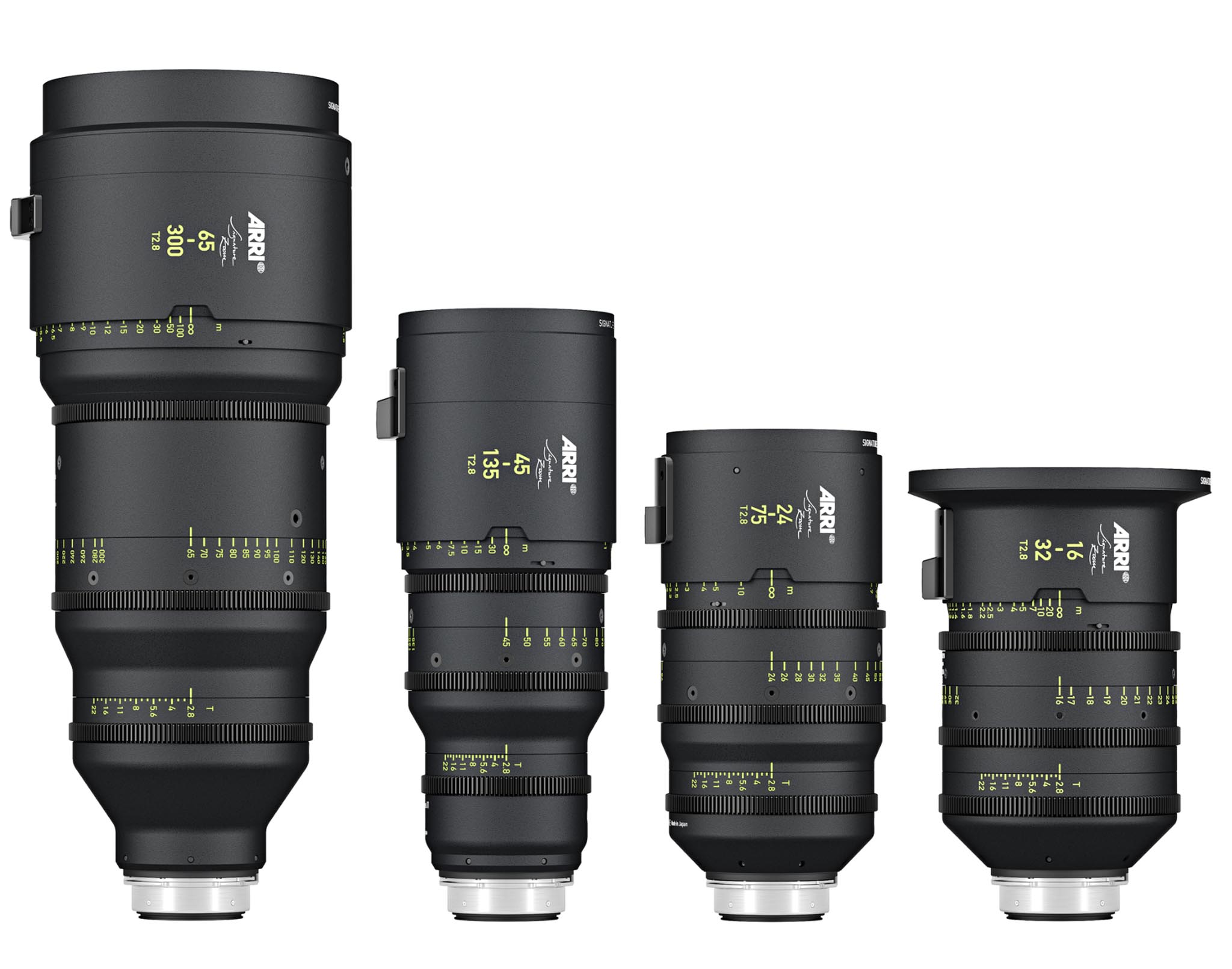
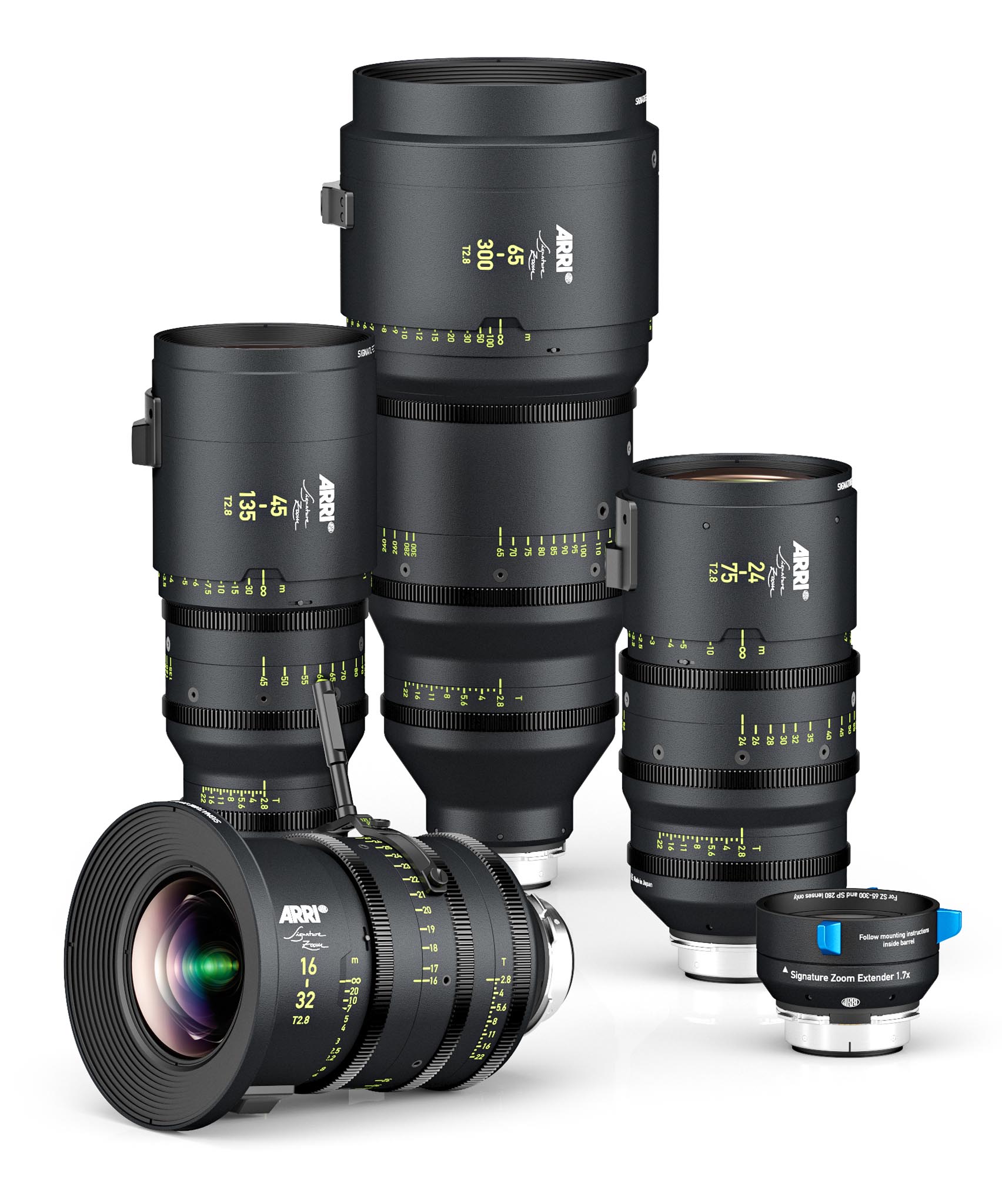
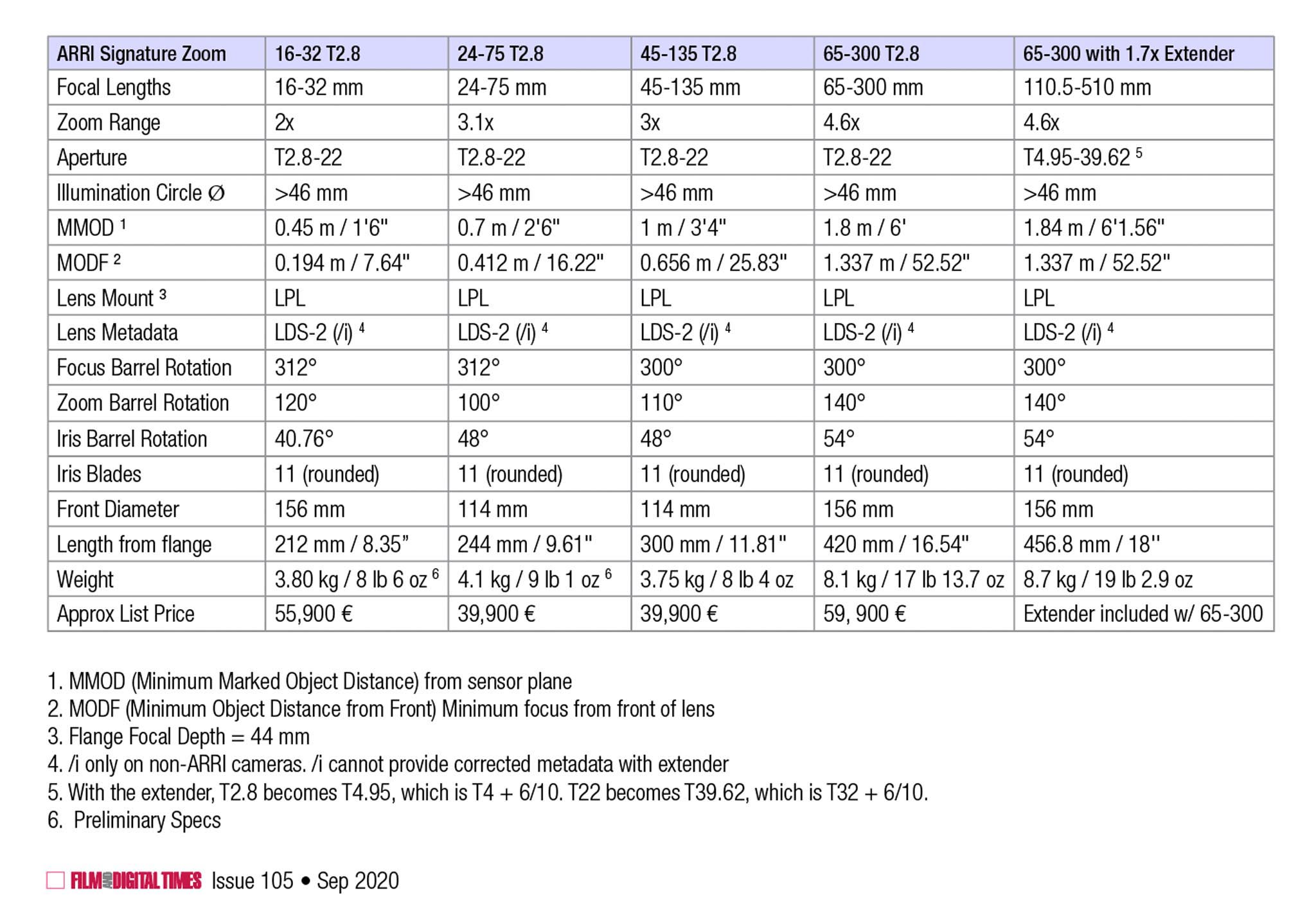
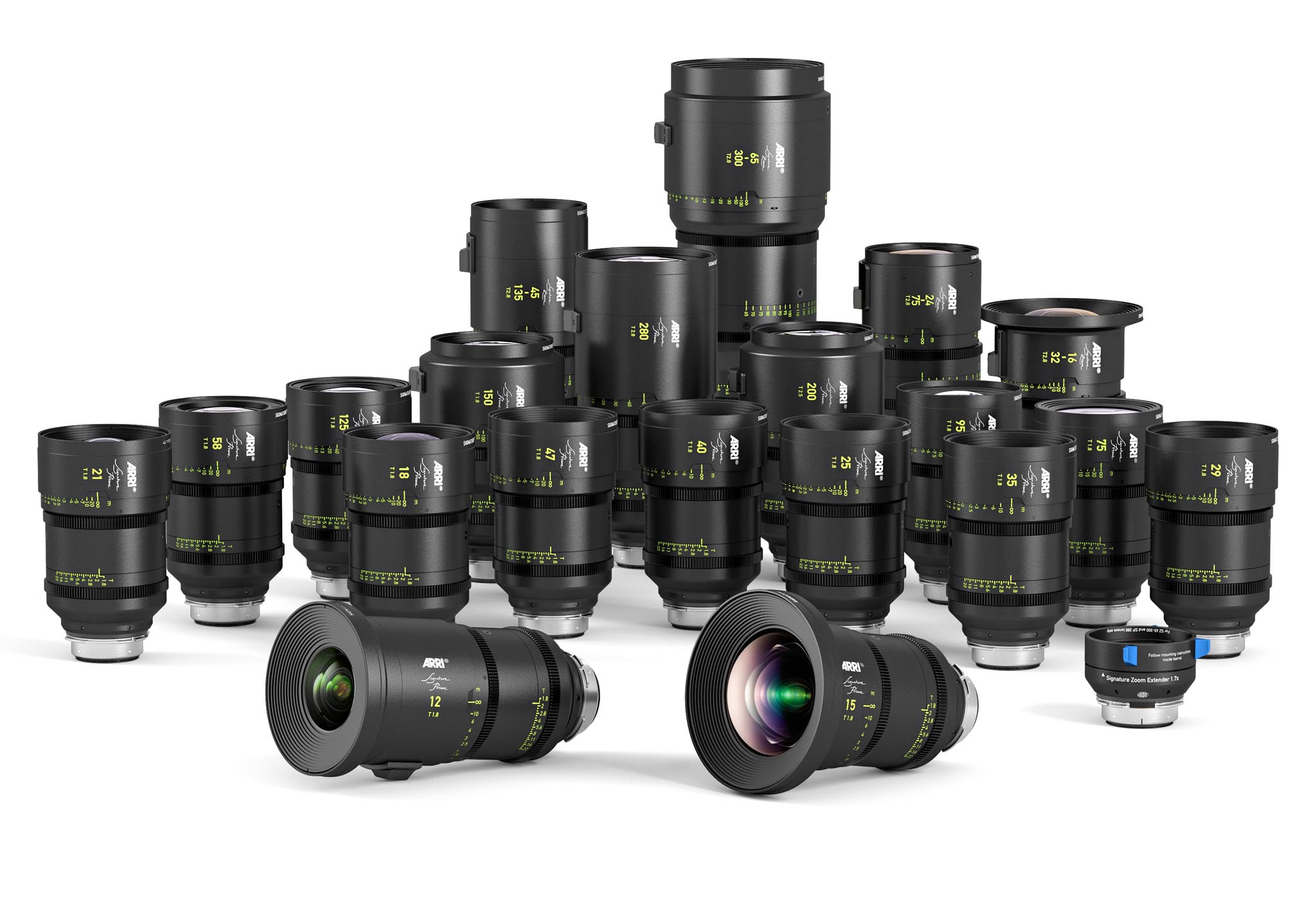
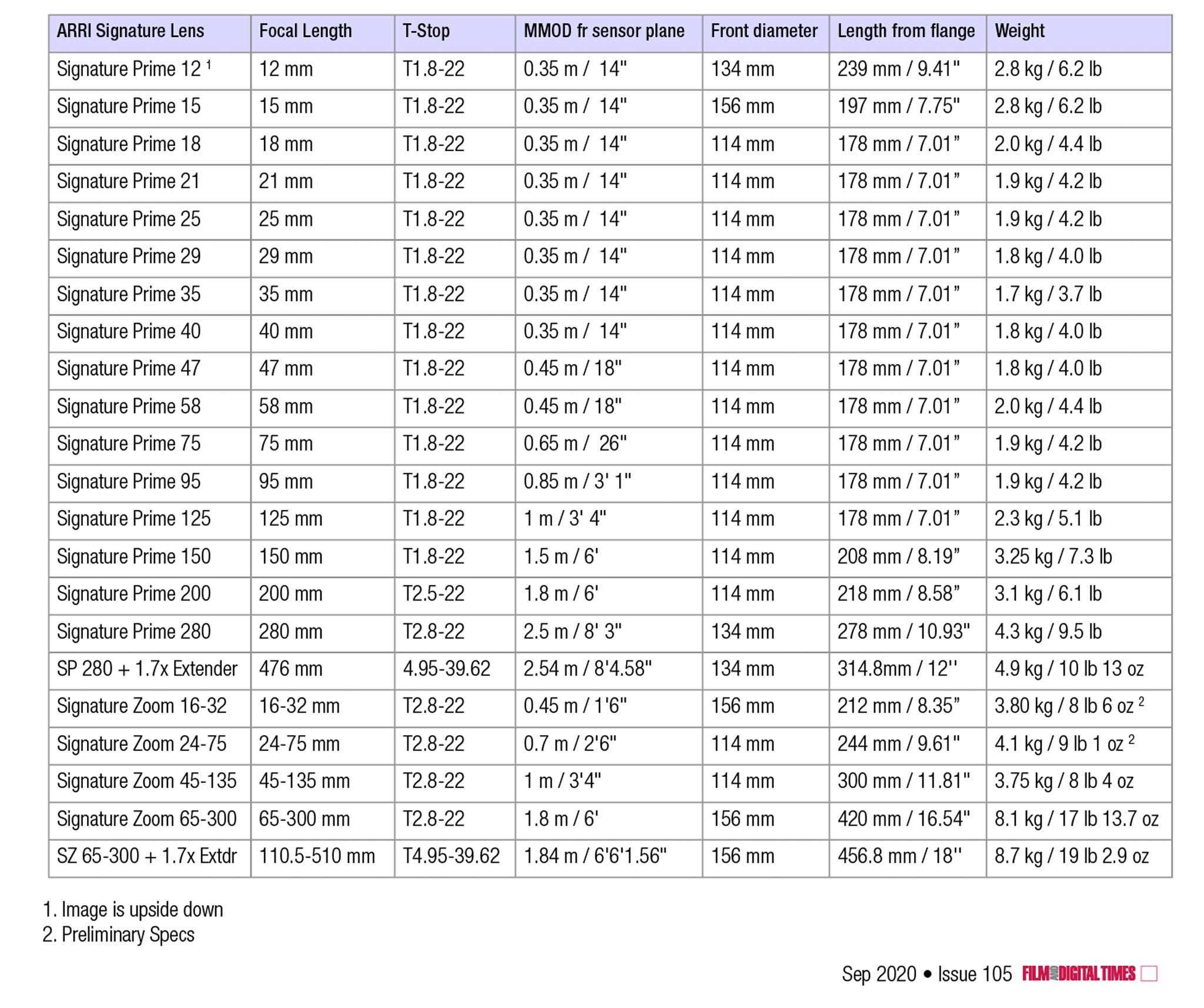
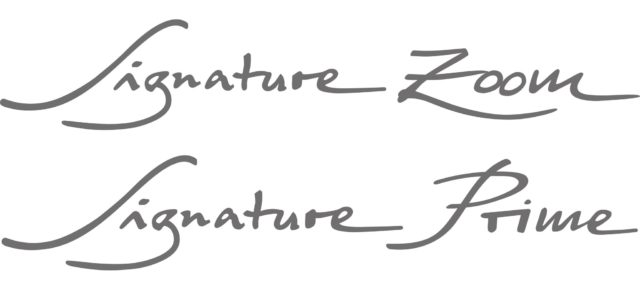
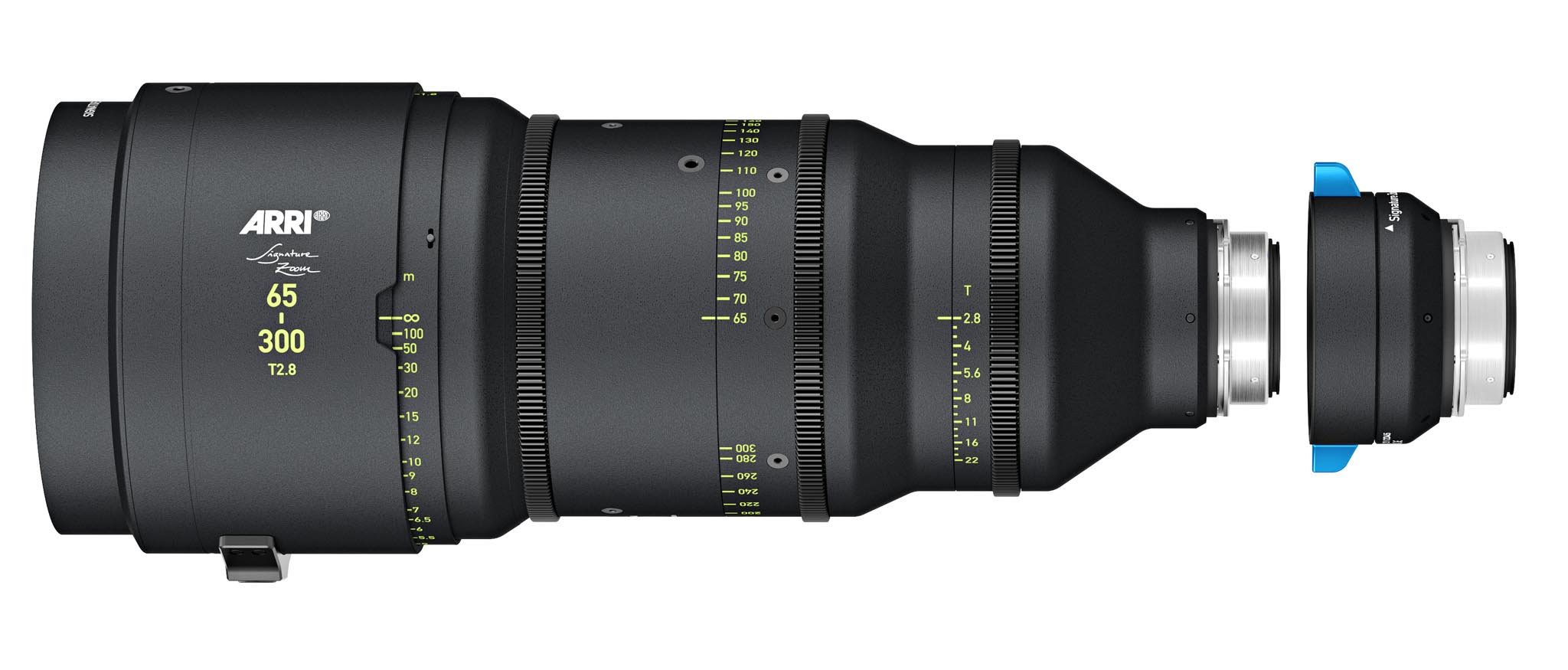
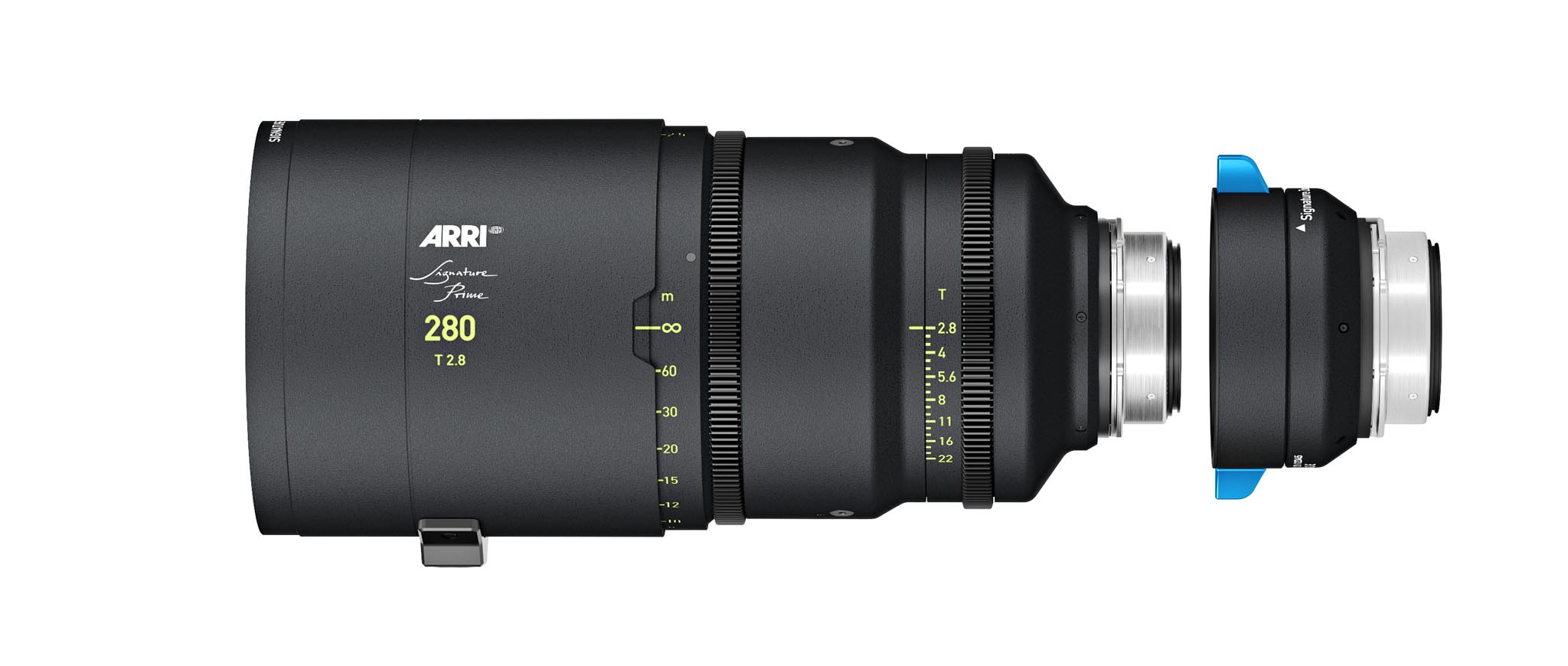
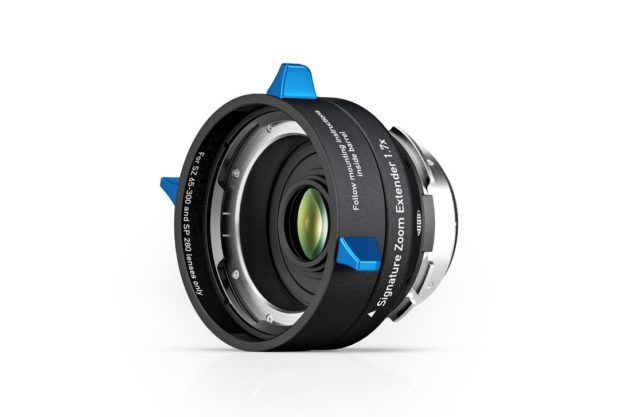

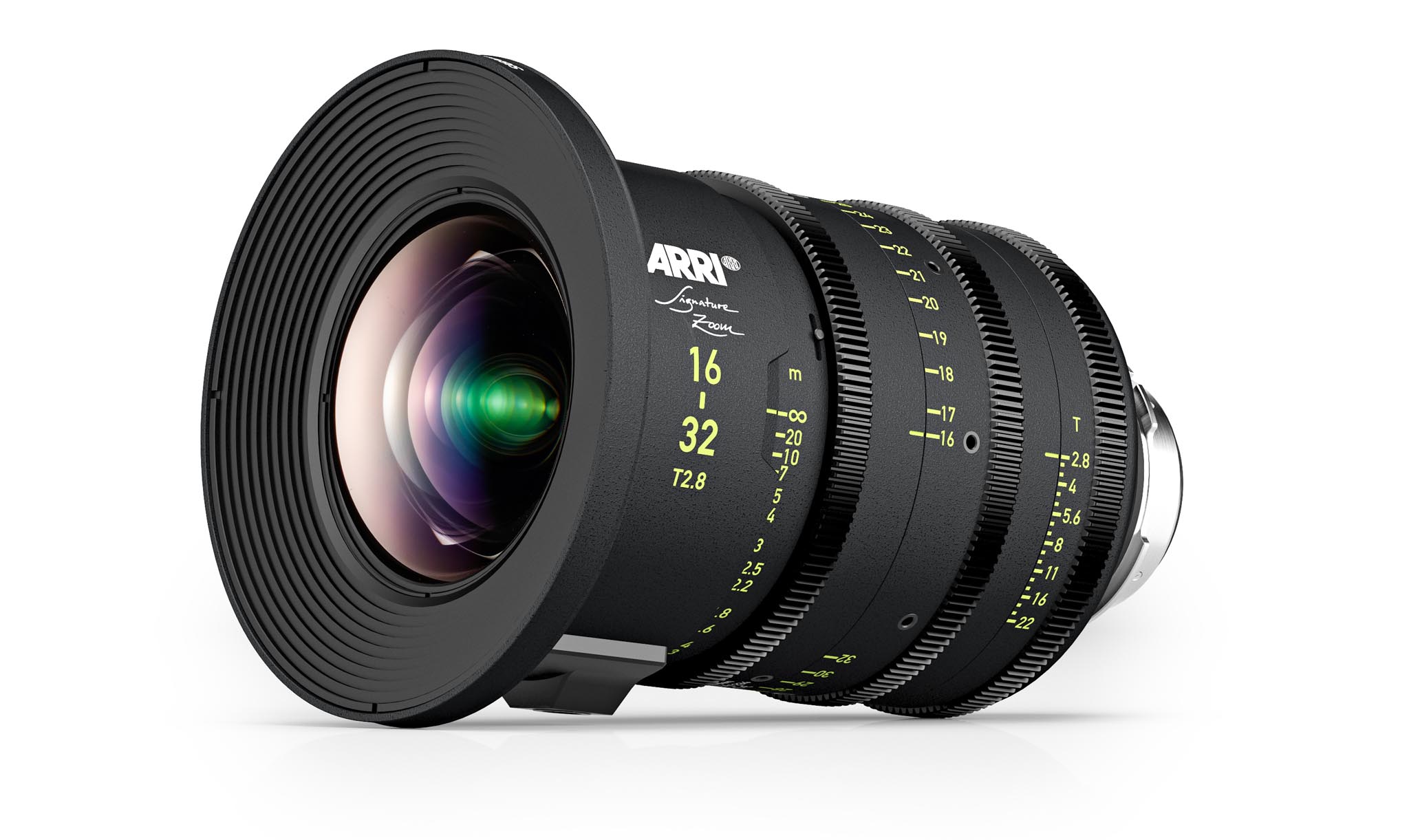




















Thanks for this article Jon. We are using the Signature Primes on a feature being shot in Toronto being shot by Dan Lausten. I look forward to getting some of the zoom lenses to test out in the future. The prime lenses are a dream to focus pull on, I hope the zooms are too.
Thanks Doug. What makes the Signature Prime lenses a dream to focus pull on ?